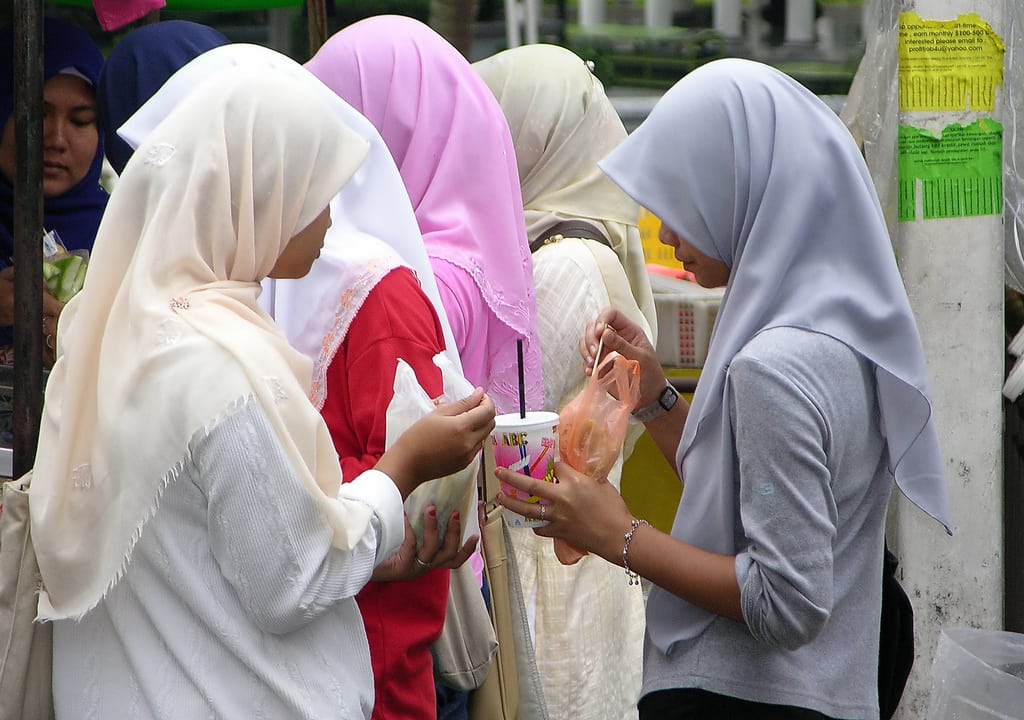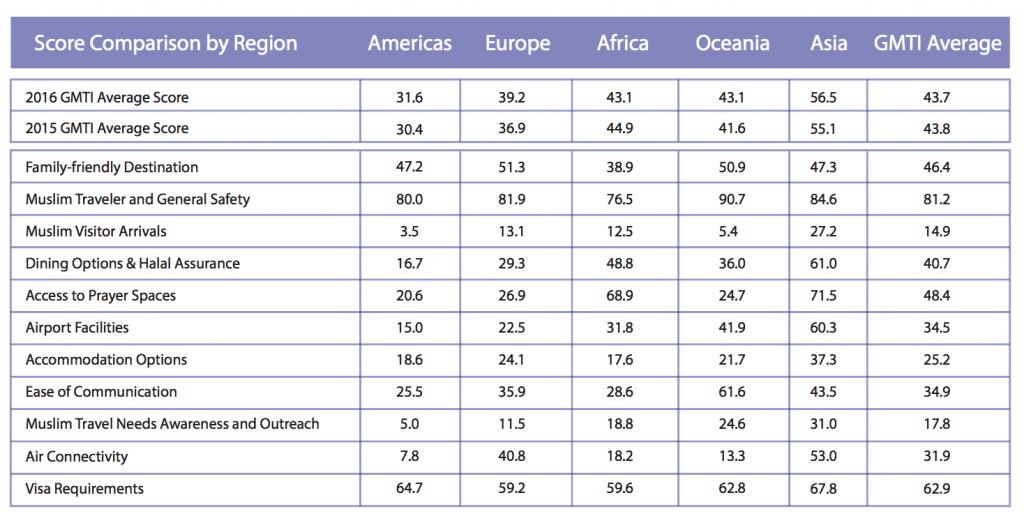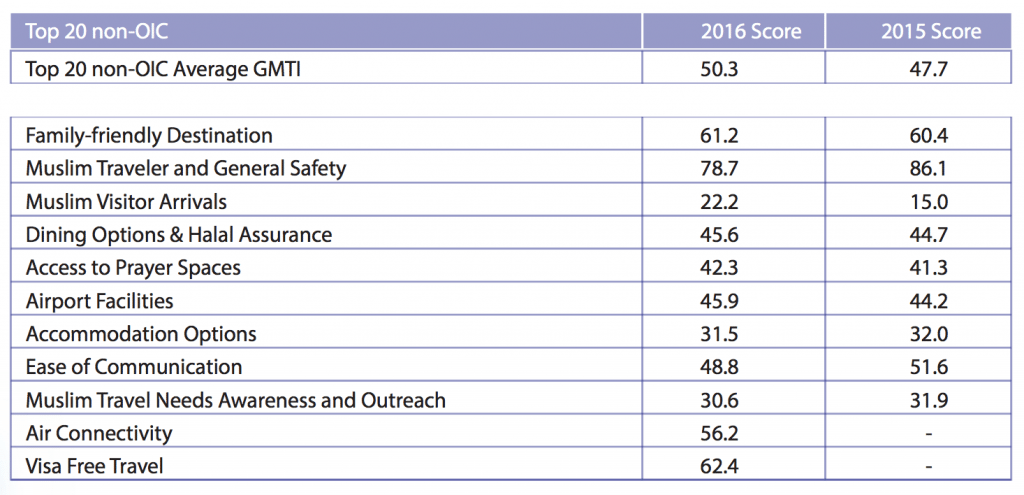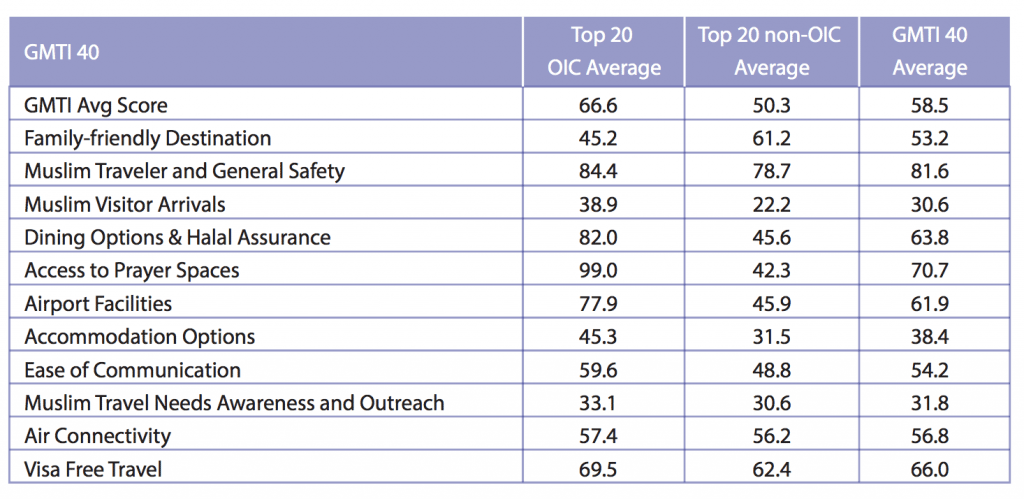Skift Take
These data points outlining massive amounts of visitor arrivals and spending should be enough to convince travel brands that the time has come to show these travelers that they matter.
More than 117 million international travelers and counting make up the global Muslim travel market but conditions have worsened for some key aspects of travel for Muslims during the past year.
According to MasterCard and CrescentRating‘s 2016 Global Muslim Travel Index the safety of traveling Muslims is less secure this year than it was a year ago. Index values for “general safety of Muslim travelers” decreased by more than five index points for both Organization of Islamic Cooperation (OIC) countries, or those with predominant Muslim populations, and non-OIC countries. Both companies recently examined 130 countries for the index to access how destinations are catering to the Muslim travel market and assigned an index value of 0 to 100 to 11 categories part of the analysis.
The accommodation options and destination marketing towards Muslim travelers categories also received lower index values this year compared to 2015 for both sets of countries and ease of communication’s index value also decreased year-over-year for non-IOC countries (see charts below).
Despite this, significantly more Muslims are traveling–the 117 million Muslims who traveled in 2015 is an 8.3% increase over 2014 Muslim international visitor arrivals. These travelers also spent more than $145 billion last year and are projected to spend more than $200 billion annually by 2020. Some major travel brands have given more credence to this data. TripAdvisor, for example, launched an Arabic version of its site this month.
“The Muslim population is one of the youngest in the world and because of that they are much more technology savvy than they once were,” Fazal Bahardeen, founder and CEO of CrescentRating and HalalTrip, told Skift. CrescentRating ranks destinations on how open they are to Muslims and HalalTrip is a travel booking and planning site for Muslim travelers.
“You have high smartphone penetration in Saudi Arabia, the U.A.E., and Indonesia. This is going to significantly change how Muslims have been traditionally traveling and booking travel. Muslims were traditionally traveling as families and they were going to local travel agents to book their flights. There’s a huge technology divide among the different generations compared to, say, the U.S. or European markets.”
To Bahardeen’s point, more than 50% of Muslim international travelers traveled with their families in 2015–a much higher percentage compared to other traveler segments. However, there’s a 16 point difference in index values between OIC and non-OIC countries for the index’s “family-friendly destinations” category, which considers availability of family-friendly activities such as sightseeing, shopping and beach-going.
This year’s index looked at visa requirements for the first time and found that Asia and the Americas have less restrictive requirements for Muslims when compared to other regions (with index values of 67.8 and 64.7, respectively). But as the index is out of 100, these values aren’t commendable and Muslim travelers continue facing a myriad of visa-related impediments.
Chart 1: More than half of Muslim international visitor arrivals traveled to a destination in Asia in 2015. By 2020, MasterCard and CrescentRating project more than 168 million Muslims will travel internationally.
Chart 2: The overall global index value considering both OIC and non-IOC countries decreased one-tenth of a point year-over-year while the regional index scores improved from 2015 for all regions except Africa.
Chart 3: For the top OIC countries, their overall index value improved in 2016 compared to last year but index values decreased year-over-year for categories such as Muslim traveler and general safety, family-friendly destination and accommodation options. Ironically, there was a 16.1 point year-over-year decrease in the Muslim travel needs awareness and outreach category, which considers the amount of destination marketing targeted at Muslim travelers. That’s especially discouraging given these countries all have mostly Muslim populations.
Chart 4: The overall index value for non-OIC countries also increased year-over-year, and actually saw a larger increase than the OIC countries (2.6 points versus 0.8 points, respectively). But Muslim traveler and general safety’s index value had a larger decrease for non-OIC countries (-7.4) than that of the OIC countries (-5.5).
Chart 5: Interestingly, there is a 16 point difference between the OIC and non-OIC countries for the family-friendly destination category. This category’s value is calculated by looking at overall visitor arrivals and availability of family-friendly activities such as sightseeing and beaches in the destination.
Source: MasterCard and CrescentRating
Have a confidential tip for Skift? Get in touch
Tags: Mastercard, religion, skiftstats
Photo credit: A group of Muslim travelers queueing for food in Kuala Lumpur, Malaysia. Peter Rowley / Flickr






